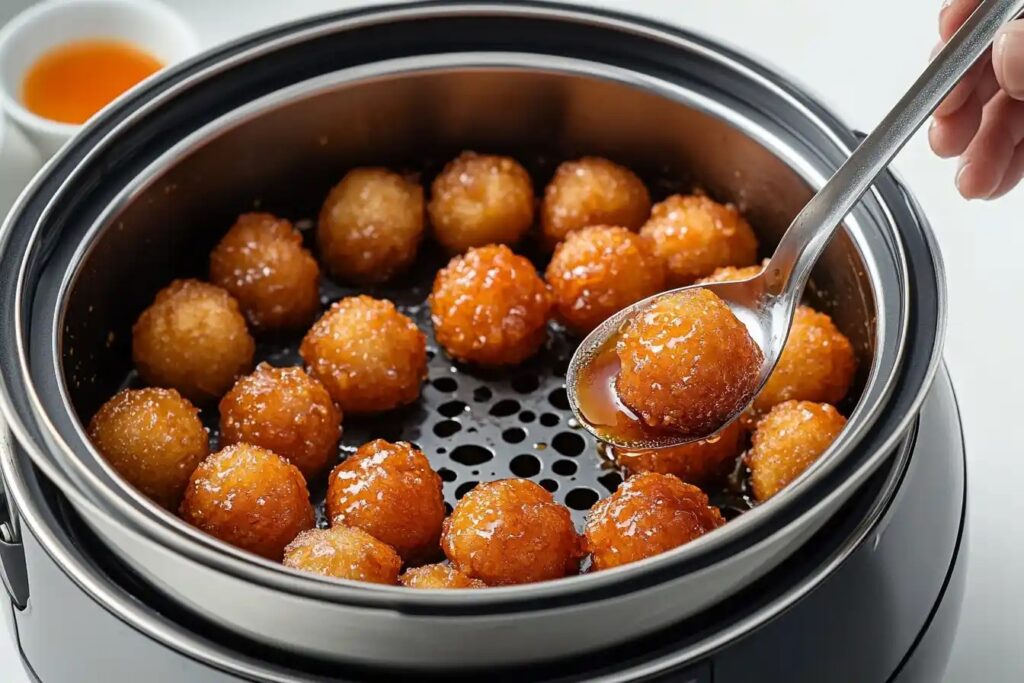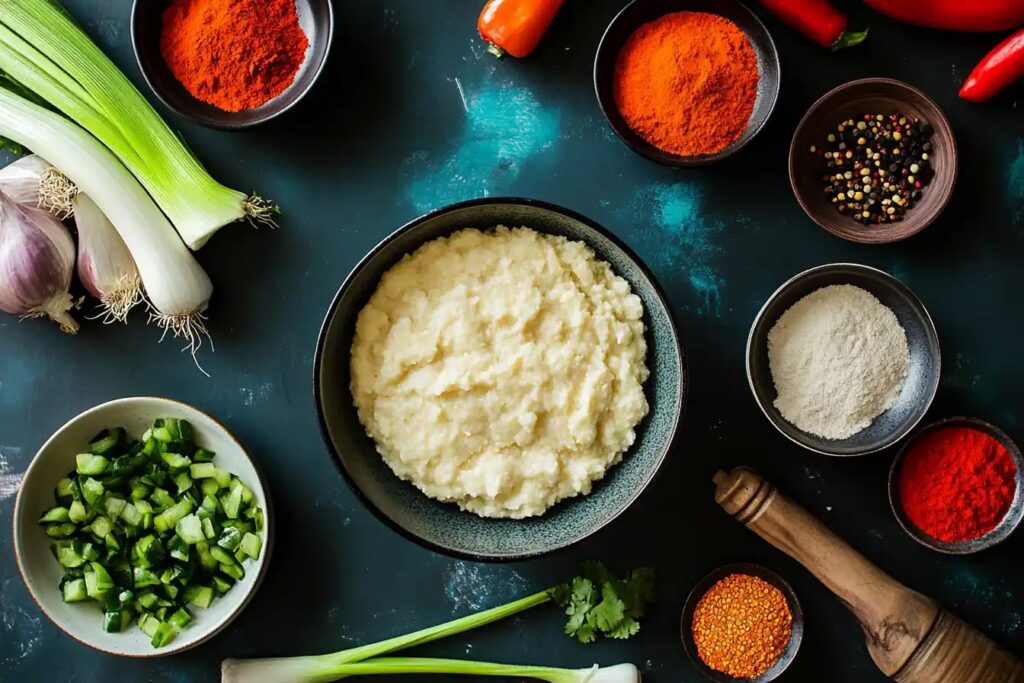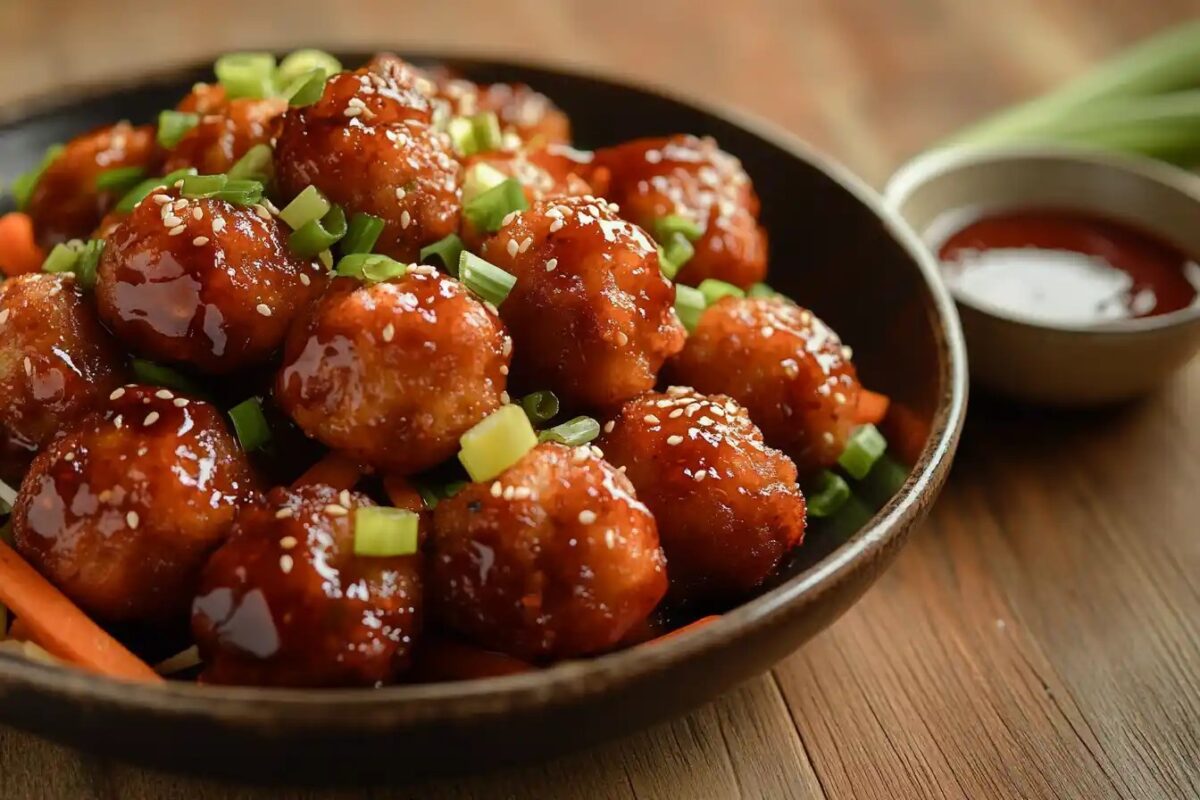Introduction
Have you ever wondered why your Manchurian just won’t turn out crispy? It’s frustrating, isn’t it? You’ve followed the recipe to the letter, but the end result is soggy or lacks that delightful crunch. Don’t worry—you’re not alone! Whether you’re making Gobi Manchurian or the classic vegetable version, achieving crispiness involves mastering the right techniques, ingredients, and cooking methods.
In this article, we’ll break down all the possible reasons behind this common culinary dilemma. From batter consistency to frying techniques, and even ingredient choices, we’ll uncover the secrets to perfecting crispy Manchurian. Let’s dive in and troubleshoot your way to crunchier success!
Common Reasons Why Manchurian Is Not Crispy
Insufficient Coating
A well-executed coating is the cornerstone of crispy Manchurian. Without it, your dish is doomed to mediocrity. Many cooks either skip this step or don’t apply enough batter, which results in Manchurian balls or florets failing to develop the golden crust you’re craving.
- Why coating matters: The batter acts as a protective shell, locking in moisture and ensuring the ingredients fry evenly.
- Common coating mistakes: Thin, uneven, or patchy coating will lead to underwhelming results. To fix this, make sure every surface is thoroughly covered before frying.
Issues with Batter Consistency
Another major culprit is batter consistency. A batter that’s too thin will slide right off, leaving you with a limp exterior. On the other hand, overly thick batter clumps and creates a doughy texture instead of a light, crispy crust.
- Perfect batter consistency: Aim for a mixture that is neither watery nor overly sticky. It should coat the back of a spoon lightly but cling to your ingredients.
- Pro tip: Add a blend of cornstarch and all-purpose flour to your batter for that ideal balance. Cornstarch adds crunch, while flour provides structure.
Avoiding Soggy Ingredients
Soggy vegetables or poorly drained Manchurian balls can sabotage your crispiness goals. Excess water in the mixture turns the batter runny and reduces oil temperature during frying, leading to a mushy texture.
- What to do: Pat vegetables dry with a kitchen towel and avoid overloading your mixture with wet ingredients.
Cooking Techniques That Impact Crispiness

Temperature of the Oil
One of the most overlooked factors in achieving crispy Manchurian is the oil temperature. If the oil is too cold, the batter absorbs excessive grease, resulting in soggy and limp Manchurian. On the flip side, overly hot oil can burn the outer layer while leaving the inside undercooked. Striking the right balance is essential.
- How to test oil temperature: Use a kitchen thermometer or drop a small bit of batter into the oil. If it sizzles immediately and rises to the surface, your oil is ready.
- Maintaining the right heat: Cook in small batches to prevent the oil from cooling too much and use medium-high heat for consistent results.
Frying Method
Your frying technique can make or break the crispiness. The two main issues here are overcrowding the frying pan and choosing the wrong frying approach.
- Double frying vs. single frying: For a crunchier texture, try double frying. Fry the Manchurian balls or florets once at a lower temperature to cook them through. Then, increase the heat and fry them again for that crispy outer layer.
- Avoiding overcrowding: Adding too many pieces at once lowers the oil temperature, leading to uneven cooking. Fry in small batches to ensure each piece gets the attention it deserves.
If you’re experimenting with chicken-based Manchurian, you might find this crispy chicken recipe guide helpful.
Ingredients That Affect Crispiness

Choice of Flour and Starch
The type of flour and starch you use in your batter can significantly impact its texture. Cornstarch, for instance, is renowned for creating a light and crispy coating, while all-purpose flour offers a sturdy base.
- Best combinations: Mix cornstarch with all-purpose flour in a 1:1 ratio for a perfectly balanced batter. For an extra crunch, some chefs swear by adding a teaspoon of rice flour to the mix.
- Cornstarch alternatives: Potato starch and tapioca flour are great substitutes if cornstarch isn’t available.
Moisture Content in Vegetables or Meat
Excess moisture is a surefire way to ruin crispiness. Vegetables like cauliflower, used in Gobi Manchurian, naturally retain water, which can interfere with frying.
- Reducing moisture: Pat your vegetables dry before dipping them into the batter. For meat-based Manchurian, such as chicken, marinate with salt to draw out moisture, then blot with a paper towel.
- Avoid pre-soaked mixtures: Prepare the batter fresh and coat the ingredients just before frying to prevent it from turning watery.
For a detailed explanation of the role of cornstarch in crispy dishes, check out this informative article.
How to Keep Manchurian Crispy After Cooking
Proper Draining of Excess Oil
Even if your Manchurian is perfectly crispy right out of the fryer, improper draining can ruin all your hard work. The excess oil left on the surface can make the coating soft as it cools, leading to a disappointing texture.
- Use a wire rack instead of paper towels: While paper towels can absorb some oil, they also trap steam, which can soften the crispy outer layer. A wire rack allows air to circulate, preserving crispiness.
- Draining timing matters: Don’t stack the Manchurian balls immediately after frying. Let them cool slightly before transferring to a serving dish.
Serving Tips
How and when you serve your Manchurian can also affect its texture. A common mistake is mixing the sauce and fried balls too early, turning everything soggy before it even reaches the table.
- Sauce timing: Keep the sauce and Manchurian balls separate until just before serving. This ensures the fried pieces stay crispy while still absorbing the flavors of the sauce.
- Pre-sauce techniques: For even better results, you can lightly toss the fried Manchurian in cornstarch before mixing with the sauce. This creates a protective layer that helps maintain crispiness.
If you’re looking for more tips on maintaining texture in crispy dishes, check out this guide on perfect crunch every time.
Troubleshooting Hard Manchurian Balls
Overmixing or Compacting the Mixture
If your Manchurian balls feel more like hockey pucks than crispy bites, the problem might be overmixing. Kneading or compacting the mixture too much can make the balls dense and hard, ruining their texture.
- Mixing lightly: Handle the mixture gently, combining the ingredients just until they come together. Overworking develops gluten, which leads to toughness.
- Test the texture: Before forming all the balls, fry a small test piece. If it’s too hard, loosen the mixture by adding a tablespoon of water or oil.
Improper Frying
Frying errors can also cause the balls to turn out hard instead of crispy. This often happens when the oil temperature is either too low or too high.
- Ideal frying temperature: Aim for oil heated to 350°F (175°C). At this temperature, the Manchurian balls cook evenly, developing a crispy crust without becoming hard.
- Watch the frying time: Don’t overcook! Fry until the balls are golden brown, then remove them to cool slightly before adding to the sauce.
For more delicious recipes, including unique twists on traditional Manchurian, visit the recipe section. You might just find your next favorite dish!
FAQs Section
How to Keep Manchurian Crispy?
One of the most common questions is how to ensure your Manchurian stays crispy until it’s served. The secret lies in managing both the frying process and the timing of sauce application.
- Double frying works wonders: Fry the Manchurian balls twice—first at a lower temperature to cook them through, and then at a higher temperature for crispiness.
- Serve sauce separately: Always keep the sauce and fried pieces apart until the very last minute. Toss them together only when you’re ready to serve.
- Storage tips: If you’re preparing in advance, store fried Manchurian in an airtight container lined with paper towels. Reheat in an oven or air fryer to revive the crispiness.
Why Is My Gobi Manchurian Not Crispy?
Gobi Manchurian is particularly tricky due to the natural moisture content in cauliflower. This often leads to soggy results if not handled correctly.
- Pat the florets dry: After washing, use a clean kitchen towel to dry the cauliflower completely.
- Avoid watery batter: Make sure the batter clings to the florets without sliding off. Add a touch of cornstarch for extra crunch.
- Fry in small batches: Overcrowding lowers oil temperature, causing the batter to absorb oil and lose its crispiness.
Why Are My Manchurian Balls Hard?
Hard Manchurian balls are typically a result of overmixing or frying mistakes.
- Don’t overwork the mixture: Combine the ingredients gently, and avoid pressing them too tightly when forming balls.
- Use the right oil temperature: Frying at low heat can make the balls absorb too much oil, while high heat might cook them unevenly, resulting in a hard texture.
Is Cornstarch Used in Manchurian?
Yes, cornstarch is an essential ingredient for achieving the perfect crunch in your Manchurian.
- Why cornstarch?: It helps create a light, crispy coating that holds up well against sauces.
- Substitutes: If you don’t have cornstarch, you can use rice flour or potato starch as alternatives.
Expert Tips and Tricks for Crispy Manchurian
Using Cold Batter
Did you know that the temperature of your batter can affect its performance? A cold batter slows down the cooking process slightly, giving the coating more time to crisp up.
- Refrigerate before frying: Prepare your batter and let it chill for 15–20 minutes before coating the ingredients.
- Why it works: Cold batter contrasts with hot oil, forming a crisp outer shell almost instantly.
Seasoning the Coating
Adding seasoning to your batter or coating is a simple way to enhance both flavor and texture.
- Mix it in: Add salt, pepper, garlic powder, or paprika to the batter to infuse flavor into every bite.
- Balance flavors: Avoid adding too much seasoning, as this can overpower the sauce.
Experimenting with Double Frying
If you’re not already double frying your Manchurian, now’s the time to try. It’s one of the best methods for ensuring long-lasting crispiness.
- The process: First, fry the Manchurian at a lower temperature (around 300°F/150°C) to cook it through. Remove, let it cool, then fry again at a higher temperature (around 375°F/190°C) for a crispy exterior.
- Benefits: Double frying creates a durable crust that stays crunchy even when mixed with sauce.
For more cooking hacks and tips, don’t miss our article on crispy chicken secrets.
Conclusion: Mastering Crispy Manchurian
Achieving the perfect crispiness in Manchurian can seem challenging, but with the right techniques and a bit of practice, it’s entirely possible. Whether your issue stems from batter consistency, frying methods, or ingredient choices, understanding these elements will transform your cooking.
When you ask, “Why is my Manchurian not crispy?” the answer often lies in small details. From ensuring the oil is at the right temperature to double frying and keeping moisture levels low, these little adjustments make a big difference.
Remember, the key is preparation and timing. Take care to coat your ingredients evenly, fry in batches, and serve the dish immediately after mixing with the sauce. With these tips in your arsenal, you’re well on your way to enjoying restaurant-quality crispy Manchurian at home.
FAQs Recap and Additional Resources
FAQs Recap
We’ve covered some of the most frequently asked questions about crispy Manchurian in this guide. Whether you’re struggling with soggy coatings or hard textures, you now have actionable solutions to tackle these issues.
- How do I keep Manchurian crispy? Timing and proper frying techniques are key. Keep sauce separate until serving.
- Why is my Gobi Manchurian not crispy? Excess moisture is the main culprit. Dry the cauliflower thoroughly and avoid overcrowding the pan.
- Why are my Manchurian balls hard? Overmixing and improper frying temperatures are the usual suspects. Handle the mixture gently and fry at medium-high heat.
- Is cornstarch necessary for Manchurian? Yes, it’s essential for a light, crispy coating. Rice flour or potato starch can work as substitutes.
Additional Resources
For more detailed recipes and tips on improving the texture of fried dishes, check out these related articles:
If you’re curious about other variations of Manchurian, such as chicken or paneer, explore recipes in our Manchurian recipe section.
With this guide, you’re now equipped to troubleshoot and refine your cooking techniques for the crispiest Manchurian ever! Let me know if you’d like further assistance or additional recipe ideas.
